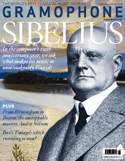Texte paru dans: / Appeared in: |
|
|
Outil de traduction (Très approximatif) |
|
|
Reviewer: David Vickers
Campra’s Tancrède was first performed at Paris’s Académie Royale de Musique in 1702 and revived sporadically until as late as 1764 – when it replaced the abandoned production of Rameau’s swansong Les Boréades. The libretto by Antoine Danchet is based on the tale of the Christian crusader Tancred mistakenly killing the Saracen princess Clorinda (disguised in a man’s armour), as told originally in Torquato Tasso’s poem ‘La Gerusalemme liberata’. An abridged version conducted by Jean-Claude Malgoire on Erato has long been out of print; this complete recording was made live at two staged performances at Versailles last year.
The oboes and bassoons of Les Temps Présents play with sensuous warmth, and there is an adroit balance between the five-part strings in the fine overture. The haute-contre Erwin Aros sings ardently as an Enchanter in the Prologue, during which Anne-Marie Beaudette’s sweetly assured La Paix and her followers sing and dance while expressing their hopes for pleasurable respite from the toils of war: a passacaille featuring passages for flutes and bassoons sways elegantly, and a minuet for two attendants features charming pizzicato strings (I’m curious to know if this is Campra’s instruction or Olivier Schneebeli’s intervention).
Thereafter, Campra’s tragédie-lyrique is dominated by low voices: Clorinde is a lowlying mezzo-soprano, whereas Tancrède, his enemy Argant (King of Circassia) and the Saracen magician Isménor are all basses/baritones. Act 1 features a vigorous duet for Alain Buet’s Argant and Eric Martin-Bonnet’s Isménor as they gloat at the prospect of defeating Tancrède; the act climaxes with a chorus illustrating a supernatural earthquake when Isménor and his followers summon up the shades of dead Saracen kings to fight with them (‘Quels bruits! qui fait trembler la terre!’); this is sung boldly by the chorus of the Centre de Musique Baroque de Versailles, although more refinement and fewer histrionics would have allowed Campra’s innovative storm music to function without hammed-up distractions.
Act 2 opens with Isabelle Druet’s plangent singing of Clorinde’s anguished realisation that she loves her captor Tancrède; Benoît Arnould’s performance of the title-role is by turns suave and valorous, and his character’s conflicting emotions and gradual bewitchment are compellingly portrayed during inventive pastoral music set in an enchanted forest at the heart of Act 3 (clattering castanets are distracting in the dances). Other high points are Clorinde’s touching lament when her rival Herminie deceives her that Tancrède is dead (‘Differe d’un moment, chere Ombre que j’adore’), the title-hero’s despondent music when he is lost in the darkest part of the forest at the start of Act 4 (‘Sombres forêts’), and Act 5’s dramatic trajectory from bellicose victory music (with trumpet and drums) to Tancrède’s bitter grief over his beloved Clorinde’s corpse. Next we need a comparably first-class complete recording of Campra’s L’Europe galante.
|
|
|
|
|
|
Cliquez l'un ou l'autre
bouton pour découvrir bien d'autres critiques de CD |
|

/3760014199585.jpg)


